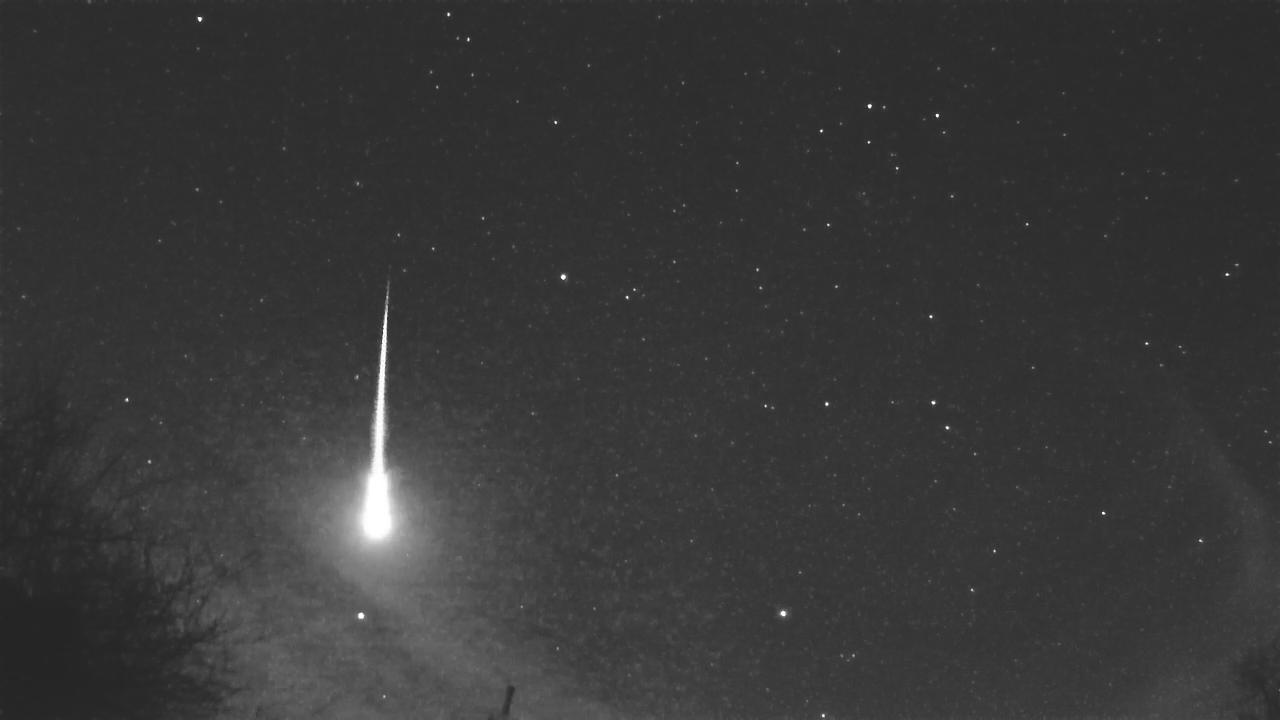A few days ago, Tuesday the 12th, my new Global Meteor Network (GMN) camera was officially online. I had requested and been assigned station ID US004L. It points to the SE and seems to capture more meteors than US002J so far. The picture below was captured its first night and is a rather bright meteor!

Before Tuesday I had been testing at night to find the best pointing and ran into a few problems. A big one, that took me way too long to figure out, was the camera’s 4mm fl lens was not 4mm. It was more like 6mm (narrow field of view) and was of terrible quality. Fortunately I had another supposedly 4mm lens on hand (they have no markings!) so I swapped it out during the day. Seemed better. Its always good to have spare parts available when dealing with these low cost items that are shipped from overseas. Later that night the lens worked much better and I could get camera pointing optimized.
This new camera is run by the same computer as my first one. I am not very familiar with the utilities that are packaged with a RMS station but the bright meteor captured above led me to learning a few things. Below is a mini movie generated by CMN_binViewer software. This is rather neat view of the data captured (and upload!) for the meteor:
The little moving box is a portion of the original video frames running at 25fps. This highlights how the meteors we see as long streaks in the sky are really just fast moving bright point sources (ok there is some glowing tail to the rock).
I am going to ask the more experienced users if, or how to combine the data because the meteor goes into the low clouds. Its in another set of captured files and is really cool. This is the still image of it:

Happy Pi day!